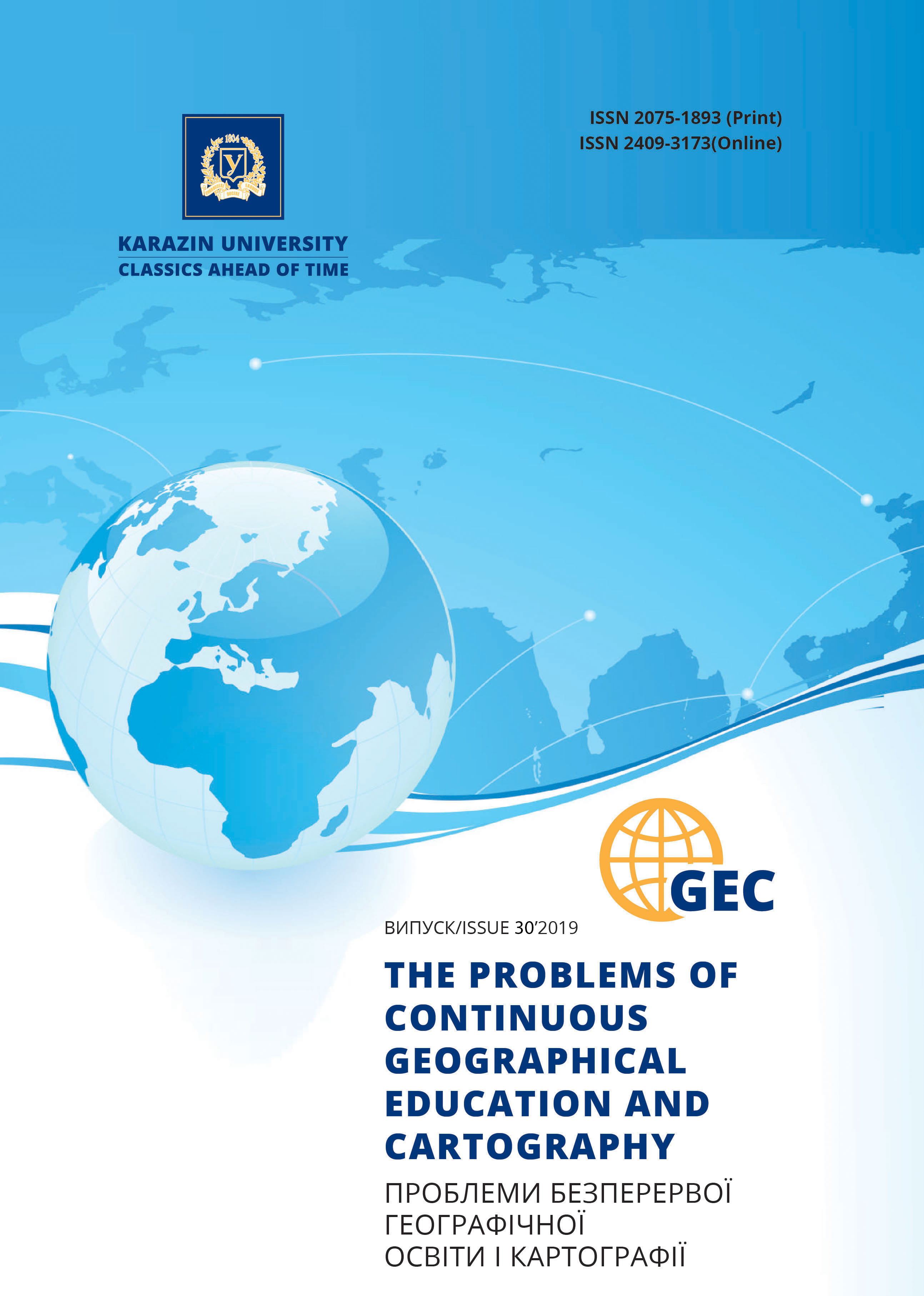Prospects for the development of offshore wind power along the coast of the Sea of Azov
Abstract
Introduction. One of the most popular alternative sources is wind energy. Offshore power stations are those which use kinetic energy of the wind and are built in shallow seas. Ukraine has access to the Black Sea and the Sea of Azov and has set the course to intensify the use of its own energy sources. It is therefore advisable to consider the development of offshore wind energy in its coastal zones.
The purpose of this article is to analyze the energy potential of the coastal zone of the Sea of Azov to determine the prospects for offshore wind energy development.
The main material. The economically feasible wind power of Ukraine is 16 GW but a significant percentage of its territory is not suitable for the installation of wind power plants, so it is advisable to use the seas area. In the coastal regions of Ukraine the average wind speed exceeds 5 m/s, which makes them effective in terms of using wind energy.
Using GIS modeling, based on the data from the Global Atlas for Renewable Energy «IRENA», the spatial distribution of the average annual wind speed over the Sea of Azov at an altitude of 50, 100, 200 m has been analyzed. Due to the wind speed from 6 to 9 m/s, the Sea of Azov has significant wind energy potential. Wind speed rising from west to east has been detected. The concentration zone of maximum wind speed is the northern and north-eastern coast of the Sea of Azov.
Accordingly, most electricity can be produced in Taganrog Bay, and the smallest amount– at the western coast of the sea.
The data on the the generated power that could be extracted by a turbine installed in these areas at different altitudes has been calculated. At an altitude of 200 m, the figures are maximum and range from 9.4 to 30.3 GWh/year. In general, the wind indexes as well as the area of the zones suitable for the installation of wind farms increase with a height. In this case, it is economically advantageous to install large wind turbines with a tower height at 100 m.
Conclusions and further research. The offshore wind energy in the coastal zone of the Sea of Azov can be developed, but it needs support at the state level. The prospect of this study is to analyze the limiting factors for this water area and to clarify the design areas of the industry.
Downloads
References
Vitroenergety`ka v Ukrayini: majbutnye poruch [Wind power in Ukraine: the future is near]. Available at: https://24tv.ua/ru/maybutnye_ukrayini_za_vitroenergetikoyu__n1040657
The Global Atlas for Renewable Energy «IRENA». Available at: https://irena.masdar.ac.ae
Dmy`trenko, L.V., Barandich, S.L. (2007). Vitroenergety`chni resursy` v Ukrayini [Wind Power Resources in Ukraine]. Scientific Papers of Ukrainian Research Hydrometeorological Institute, 256, 166–173.
Energety`chna strategiya Ukrayiny` na period do 2035 roku «Bezpeka, energoefekty`vnist`, konkurentospromozhnist`» [Ukrainian Energy Strategy up to 2035: Safety, Energy Efficiency, Competitiveness]. Available at: http://mpe.kmu.gov.ua/minugol/control/uk/doccatalog/list?currDir=50358
Zatula, V.S. (1999). Al`ternaty`vni dzherela energiyi v Ukrayini [Alternative Energy Sources in Ukraine]. Geography and Fundamentals of Economics at School, 2, 3–5.
Romanuxa, O.M. (2016). Delimitaciya Azovs`kogo morya ta Kerchens`koyi protoky`. [Delimitation of the Sea of Azov and the Kerch Strait]. Bulletin of the Mariupol State University. Series: History. Politology, 1 (15), 99-106.
Solidor, N.A. (2017). Innovacijni pidxody` do otry`mannya elektroenergiyi netrady`cijny`my` metodamy` [Innovative approaches to electricity generation using non-traditional methods]. Bulletin of Azov State Technical University, 34, 89-96.
Adedipe, O., Abolarin, M.S., Mamman, R.O. (2018). A Review of Onshore and Offshore Wind Energy Potential in Nigeria. IOP Conf. Series: Materials Science and Engineering, 413 (1), 12–19.
GE Renewable Energy. Available at: https://www.ge.com/renewableenergy
Mahdy, M., Bahaj, A.S., Alghamdi, A.S. (2017). Offshore Wind Energy Potential Around the East Coast of the Red Sea, KSA. ISES Solar World Conference, 2017 Proceedings. Available at: http://proceedings.ises.org/paper/swc2017/swc2017-0247-Mahdy.pdf
MHI Vestas Offshore Wind. Available at: http://www.mhivestasoffshore.com
Rodriguez, H.M., Carbajal, G., Romero, E. (2015). Preliminary Cost Assessment for Offshore Wind Energy in Puerto Rico. Universidad del Turabo, 5–10.
Salvacao, N., Bernardino, M., Guedes Soares, C. (2014). Assessing the Offshore Wind Energy Potential Along the Coasts of Portugal and Galicia. Developments in Maritime Transportation and Exploitation of Sea Resources. London: Francis & Taylor Group, 995-1002.
Thomsen, K. (2014). Offshore Wind: A Comprehensive Guide to Successful Offshore Wind Farm Installation. Academic Press, 404.
Copyright (c) 2019 Наталія Попович, Дар’я Джим, Олена Агапова

This work is licensed under a Creative Commons Attribution 4.0 International License.





